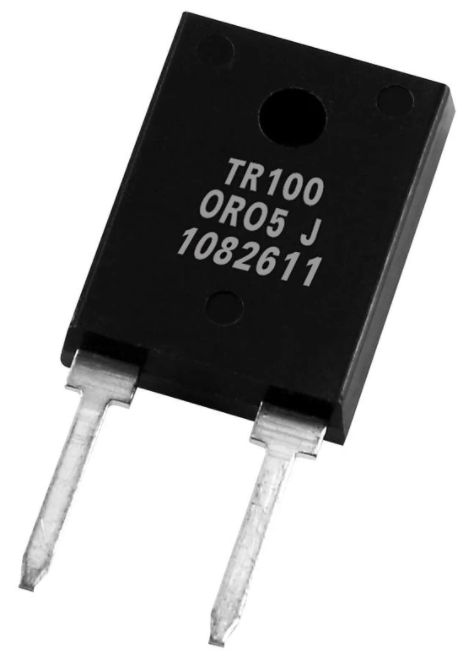POWER RESISTOR-MCTR100JDD6801
when a current is flowing into the resistor electrical energy is converted into heat. The heat is generated from the components is possess some resistance in the circuit, and this heat is dissipated into the air as heat this is called power dissipation.
Power Resistor works normally like a Resistor, but it is capable of withstanding and dissipating 5 Watts or more power. They are designed with housed in a heat sink to handle more heat with power. These are available in different types of power package styles TO-220, T-247, and TO-263, TO-163. For PCB surface-mounted TO-263, TO-163, and for Through-hole mounted TO-220, T-247 packages are available. Power Resistors construction includes thick film, Ceramic, Thin film, Carbon, Wire-wound some more are available
 |
| POWER RESISTOR |
What is the use of Power Resistor?
Part Number Explanation
- MCTR – Series Type.
- 100 – Power in Watts (100W).
- J- Resistance tolerance (F= ±1%, J=±5%, K= ±10%).
- D- Package Code(B-Bulk, D-tube).
- D-TCR (PPM/ͦ C) D: ±50, E: ±100, F: ±200, G: ±300.
- 6801- Resistance (R100: 0.1Ω, 0100:10 Ω, 6801: 6.8kΩ, 4700: 470 Ω,1001: 1000 Ω, 1002: 10000 Ω)
Features
1. 100W
at 25ͦ C temperature with heat sink
mounted
2.
Single
M3 screw mounted through the heat sink
3.
Though-hole
PCB mounted
4.
Electrically
isolated case
5.
Molded-case for Easy to mount and protection
6.
ROHS
complaint.
Electrical Characteristics
. 1. Resistance
value: 6.8 KΩ
2. Power
rating:100W
3. Operating
Voltage: 700V max.
4. Operating
Temperature: -65ͦ C to +175ͦ C
5. Resistance
case style/power package: TO-247
6. Dielectric
Strength: 1800V ac up to 60 seconds.
7. Insulation
Resistance: 10GΩ
Internal Parts
 |
| POWER-RESISTOR-TechnoElectronics |
1. Alumina Substrate
2. Resistor Layer
3. Lead
4. Molding
Precautions
Depends on the rated power (ex:100Watt) of the load, we connect the load to any power source, if any case the voltage or current exceeds its rated power (VI) it leads to damage to the product/load.
NOTE: This power resistor belongs to Through-hole mounted T-247. Thick film construction.
Types of power resistors
Wire wound power resistors
- SMD based power resistors
- Liquid Rheostats
Applications
- Voltage Regulation.
- Heater
- Current limiting
- Rectifiers
- Snubber circuits
- Motor drivers.
DATASHEET
Other Articles



0 Comments